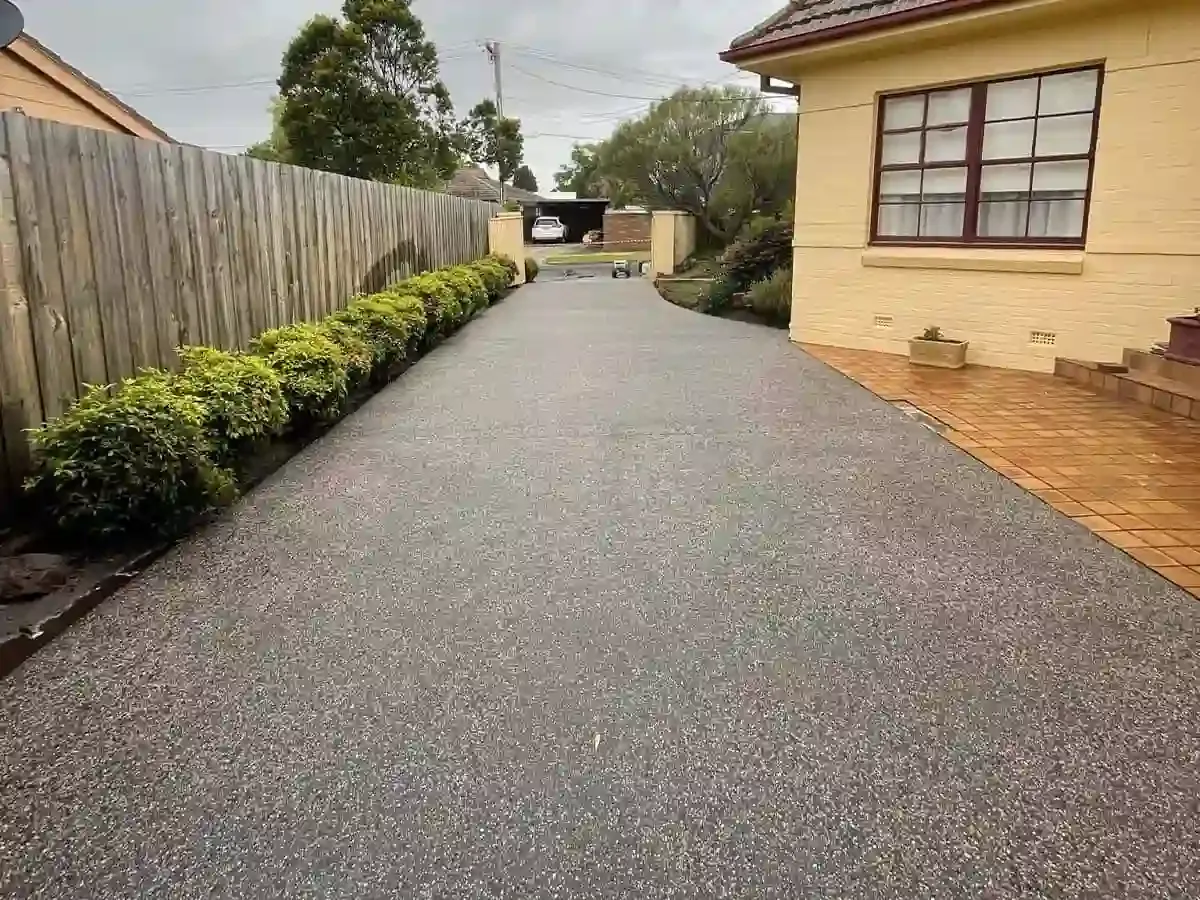Available Now
How Long Before I Can Park on My New Concrete Driveway

To ensure the longevity and durability of your new concrete driveway, it's generally recommended to wait at least seven days before parking on it. This waiting period allows the concrete to achieve a significant portion of its designed strength, reducing the risk of damage and ensuring a sturdy and reliable surface for your vehicle. However, it's essential to consider factors like local climate and the specific concrete mix used, as they can influence the exact curing time. Consulting with a concrete professional for personalized guidance is also advisable.
- Curing is Crucial: Understand that curing is essential for your driveway's durability and strength.
- Follow Industry Standards: Adhere to the guideline of waiting at least seven days before parking on your new concrete driveway.
- Consult Professionals: Seek advice from concrete experts for personalized recommendations.
- Consider Regional Variations: Acknowledge that curing times may differ based on your local climate and regulations.
- Take Precautions: Avoid parking heavy vehicles on the driveway during the initial curing period to prevent damage.
Introduction
Picture this: a newly constructed concrete driveway gleaming under the sun, beckoning you to park your car. But before you rush to make that first tire mark, it's essential to understand the critical question—how long should you wait before you can finally park on your new concrete driveway? In this comprehensive guide, we'll delve deep into the world of concrete curing, industry standards, expert opinions, and regional variations to provide you with the most detailed answer.
The Curing Process
Concrete Curing Explained
The journey to parking bliss on your new concrete driveway begins with understanding the intricate process of curing. Curing is not a matter of simply waiting; it's a chemical reaction that transforms your concrete from a freshly poured mix into a strong and durable surface. This process occurs as water within the concrete mixture reacts with cement particles, forming robust bonds. And the key takeaway here is that curing takes time.
| Table 1: Recommended Curing Times | ||
|---|---|---|
| Concrete Type | Weather Condition | Minimum Curing Time |
| Regular Concrete | Moderate Temperature | 7 days |
| High-Strength Concrete | Cold Climate | 10 days |
| Stamped Concrete | Hot and Dry | 14 days |
| Fiber-Reinforced Concrete | Humid Environment | 21 days |
Factors Affecting Curing Time
- Temperature Matters: Concrete curing time can vary significantly depending on temperature. In colder climates, it may take longer for concrete to reach its full strength, so it's essential to consider local weather conditions when determining the waiting period.
- Water is Crucial: Water plays a fundamental role in the curing process. Keeping the concrete moist during the initial curing stage can help it develop strength more effectively. Some recommend covering the concrete with wet burlap or using curing compounds to retain moisture.
- Thickness Consideration: The thickness of the concrete driveway can significantly influence the waiting time. Thicker slabs may take longer to cure fully. It's important to follow recommendations specific to the thickness of your driveway for optimal results.
| Table 2: Factors Affecting Curing Time | |
|---|---|
| Factors | Influence on Curing Time |
| Weather Conditions | Cold weather may prolong curing; heat can speed it up. |
| Concrete Mix Type | Different mix designs may require varied curing times. |
| Driveway Thickness | Thicker driveways generally take longer to cure. |
| Humidity Levels | Higher humidity can accelerate the curing process. |
Industry Standards

Common Recommendations
Now that we've established the significance of curing let's delve into industry standards and common recommendations regarding the waiting period. These standards are in place to ensure the longevity and durability of your driveway.
The 7-Day Rule
While it's common to wait about a week before driving on a new concrete driveway, achieving its maximum strength can take much longer. In industrial settings, concrete is often recognized as reaching full strength at 28 days after pouring. This means that even though you may be tempted to park on your new driveway sooner, patience pays off in the long run.
Local Regulations and Building Codes
Beyond general industry standards, local building codes and regulations can affect the waiting time before using a new concrete driveway. It's essential to check with local authorities to ensure compliance with regional standards and guidelines. Failure to do so could lead to legal issues down the road.
Expert Opinions
Seeking Professional Advice
When it comes to something as crucial as your driveway, it's always wise to seek professional advice. Concrete professionals and experts can provide personalized guidance tailored to the specific conditions of your project. They may recommend waiting longer than the standard seven days if extra caution is warranted based on factors like climate and concrete mix. If you need advice, look to
Cairns' best in concrete solutions who can assist you with the proper advice and guidance.
Regional Differences
Accounting for Geography and Climate
It's important to acknowledge that recommendations for driveway curing times can vary significantly by region and climate. For instance, in areas with extreme temperature fluctuations, experts may advise a more extended curing period to ensure the concrete's longevity. Always consider local conditions and seek guidance from experts familiar with your area.
Early Precautions
Protecting Your Investment
During the initial curing period, it's crucial to take precautions to safeguard your new driveway. Avoid parking heavy vehicles or machinery on it, as this can lead to surface damage and cracking. If you need access to your property, consider using wooden planks to distribute the weight more evenly.
Handling Heavy Machinery

Special Considerations
If you have specific needs for parking heavy machinery or vehicles on your new driveway, consult your contractor and follow their recommendations closely. They may suggest additional curing time or precautions to ensure the concrete can withstand the weight.
Alternative Materials
Considering Alternatives
While concrete is a popular choice for driveways, it's not the only option. Alternative materials like asphalt or pavers have different curing times and maintenance requirements. If you're exploring these alternatives, be sure to research and compare their pros and cons thoroughly.
Conclusion

In conclusion, the question of when you can park on your new concrete driveway is a crucial one for homeowners. Understanding the curing process, industry standards, and the factors that affect curing time is essential. While the 7-day rule is a common guideline, always consult with professionals, consider regional differences, and take early precautions to protect your investment.
By following these recommendations and being patient during the curing process, you'll ensure that your new concrete driveway remains a durable and reliable feature of your home for years to come.
Additional Resources and References
In our quest to provide you with the most comprehensive insights on "How Long Before I Can Park on My New Concrete Driveway," we've drawn upon a wealth of expert guidance, industry standards, and concrete curing knowledge. Here are the trusted sources that have enriched this discussion.
https://www.cement.org/learn/concrete-technology/concrete-construction/curing-in-construction#:~:text=Curing%20plays%20an%20important%20role,for%20extended%20periods%20of%20time
https://www.structuralguide.com/curing-time-of-concrete/
https://www.powerblanket.com/blog/long-concrete-take-set/
Frequently Asked Questions (FAQs)
A. Can I drive on my new concrete driveway after 3 days?
Driving on a new concrete driveway after only three days is not recommended. While concrete may gain some initial strength during this time, it has not fully cured. To ensure the longevity of your driveway, it's best to adhere to the industry-standard recommendation of waiting at least seven days before parking on it.
B. What is the concrete driveway curing time chart?
Concrete curing times can vary depending on factors like weather, mix, and thickness. While a general guideline is to wait seven days before parking on a new driveway, it's advisable to consult with your contractor for a specific timeline tailored to your project's conditions.
C. Is it safe to drive on concrete after 5 days?
While concrete may have gained some strength after five days, it's generally safer to wait for a full seven days before driving on it. Waiting those extra two days ensures that the concrete has reached a significant portion of its intended strength and durability.
D. How long before I can park on my new concrete driveway in Australia?
Curing times for concrete driveways in Australia may vary depending on the region and climate. In many cases, following the industry-standard guideline of waiting at least seven days is a safe practice. However, it's advisable to consult with local concrete experts who are familiar with your specific area for more accurate recommendations.
E. How long before you can drive on 4000 psi concrete?
The psi (pounds per square inch) rating of concrete indicates its compressive strength. While 4000 psi concrete is relatively strong, the curing time required remains similar to that of other concrete mixes. It's advisable to wait for at least seven days before driving on a 4000 psi concrete driveway to ensure its long-term durability.
GET IN TOUCH
Need more information? Speak to one of our experts and get personalised advice on your project to bring your vision to life. Contact us today to schedule your consultation or request a free consultation.
Contact Us
Thank you for submitting a quote request. We'll get back to you shortly!
Oops, there was an error in sending your message.
Please try again later.
YOU MIGHT ALSO LIKE...
YOU MIGHT ALSO LIKE...



Fast & Free Estimates, Call Now.
Contact us anytime via phone call or email.
Cairns' Best Concreters since 2010.
Licensee: Michael Stubbs
QBCC:
1267154
This is a referral .website, please visit our Privacy Policy and Terms of Service for more information.
Services
Working hours
- Mon - Sun
- -
Don't be shy give us a call! If we're too busy to take your call right away, one of our specialists will get back to you as soon as possible.
All Rights Reserved | Concrete Cairns
New Paragraph



